At https://phys.org/print434879707.html … diluvicursors were turkey sized herbivorous dinosaurs. These are orthinopods but diluvicursors are a sub species and the new find is of a slightly different nature and touted as a new version of diluvicursor (if that makes sense). Hopefully it does. Diluvicursor pickeringii is named after a chap with the surname Pickering (a good Yorkshire name). It was discovered in rocks in SE Australia. To be more exact, in Lower Cretaceous rocks of a sedimentary basin. It is called a Rift Valley in the article as the southern coast of Victoria is thought to align with the coast of Antarctica – at one time in the past. Was this before or after the Cretaceous? This period is dominated by chalk geology in NW Europe but in SE Australia it is rich in dinosaur fossils it would seem. In the UK the Cretaceous is also associated with dinosaurs – but not within the chalk itself. Which must be telling us something – if only that dinosaur skeletons did not usually drop to the bottom of the shallow oceans.
Fossil vertebrae (tail and foot bones) were buried in deep scours at the base of what is claimed to be a powerful river valley along with flood transported tree stumps, logs of various size and branches. The body of the Diluvicursor was entangled in the log jam. The size of the logs and the sheer abundance of wood in the flood deposit suggest a well forested plain – that was awash. Calling it a river in flood is a uniformitarian description designed to reduce the violent impact witnessed in the sediments and their contents. Interestingly, it was conifer forest. If Britain was in a sub tropical position during the Cretaceous where was Australia (and Antarctica)?
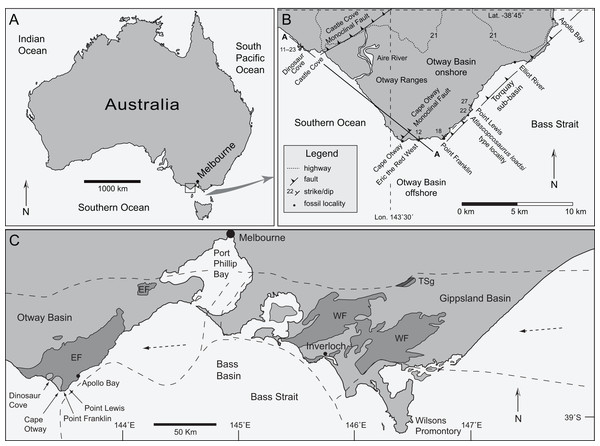
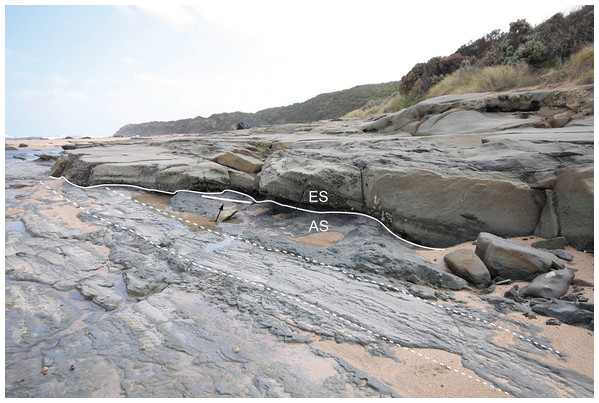
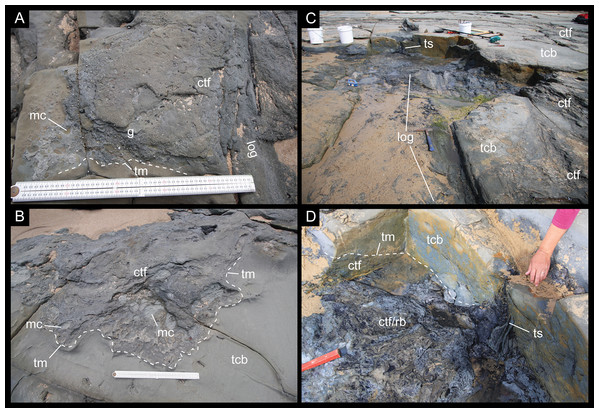
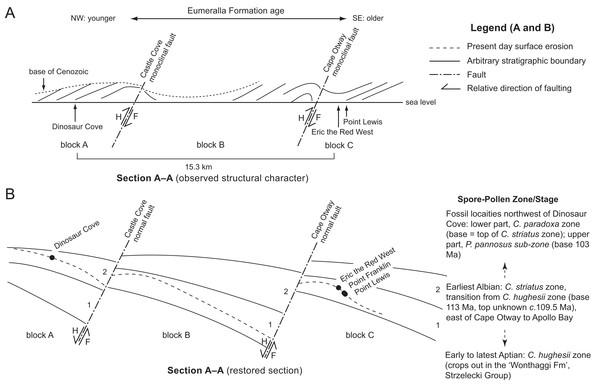
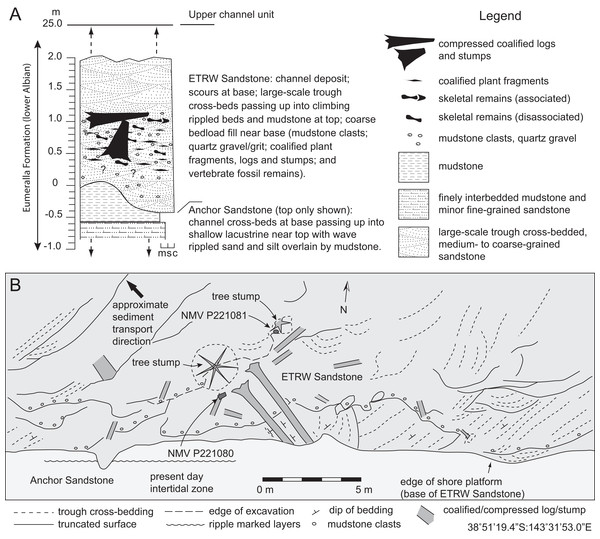
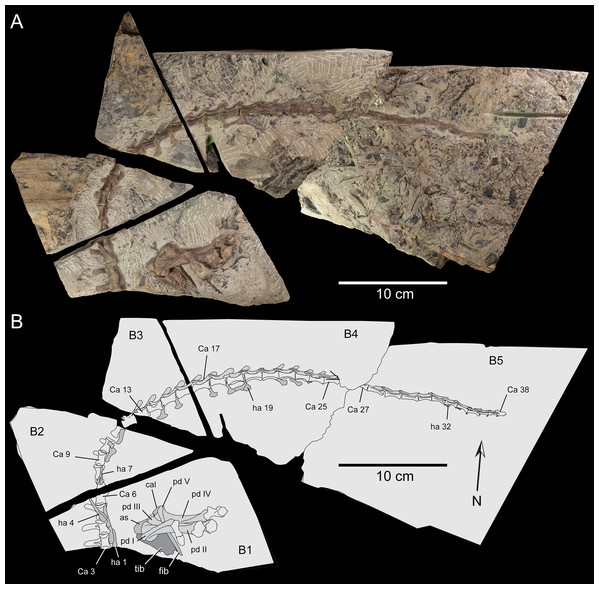
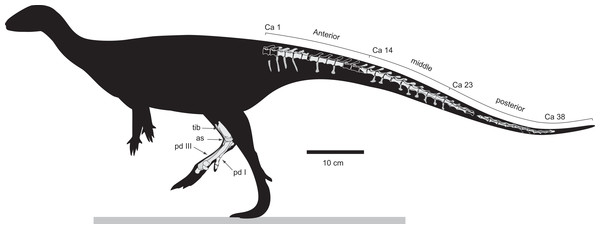
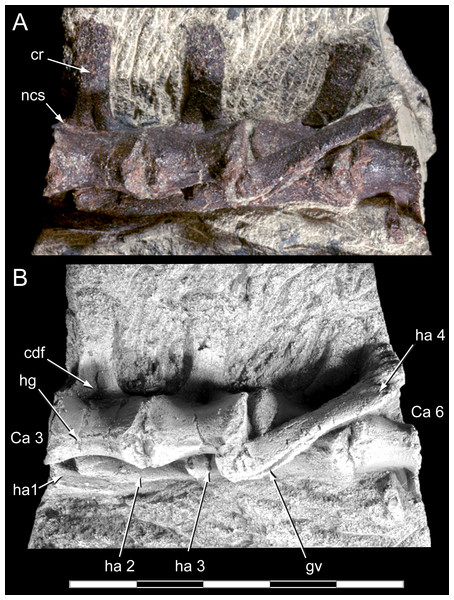
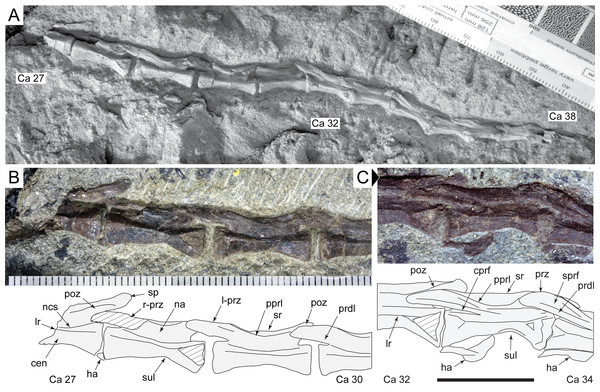
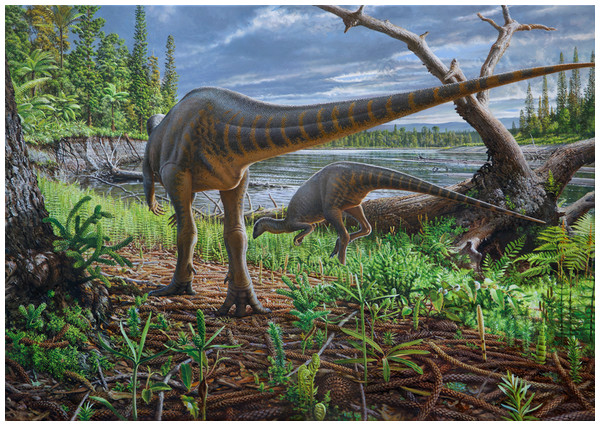 … for the full article go to https://peerj.com/articles/4113/
… for the full article go to https://peerj.com/articles/4113/
